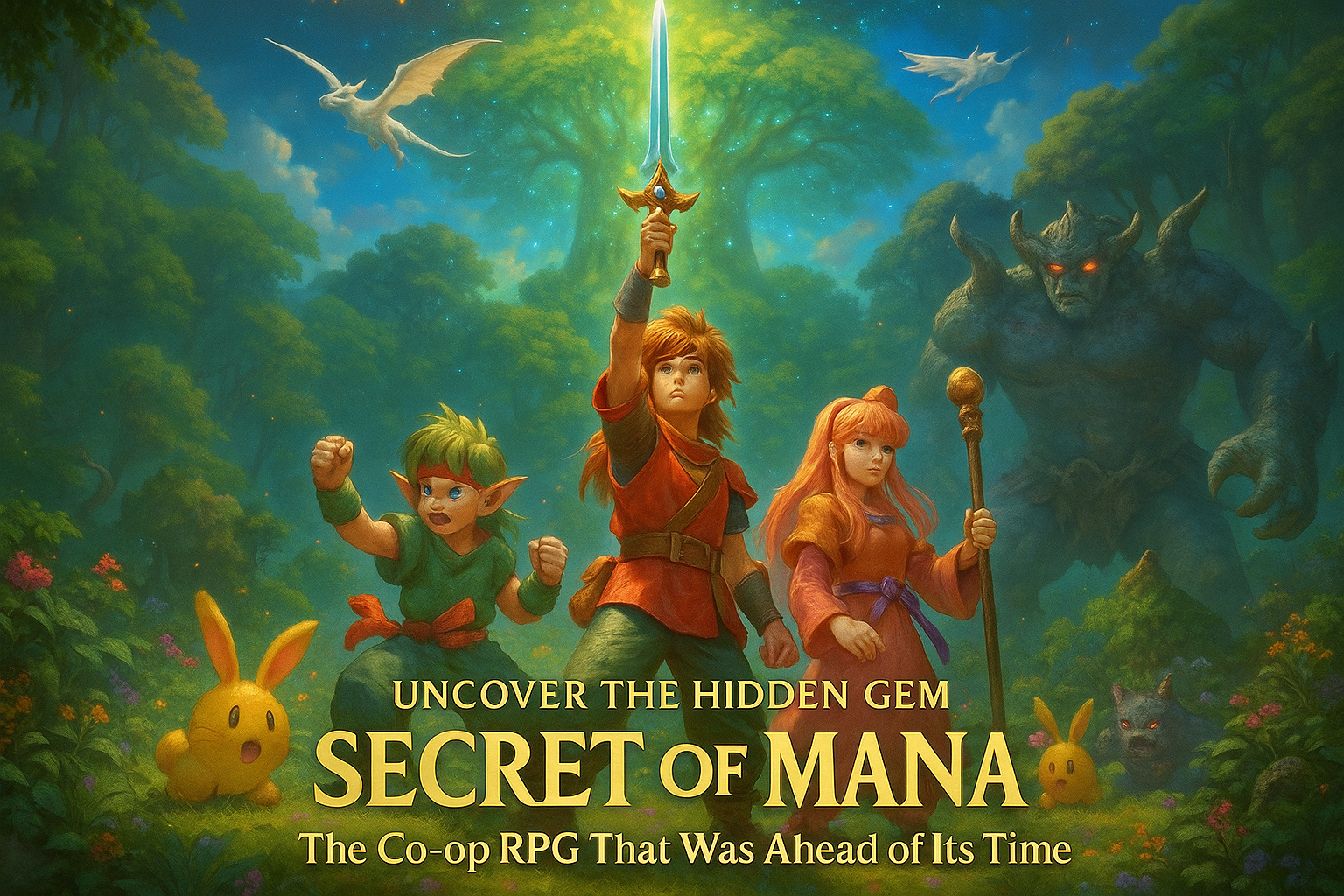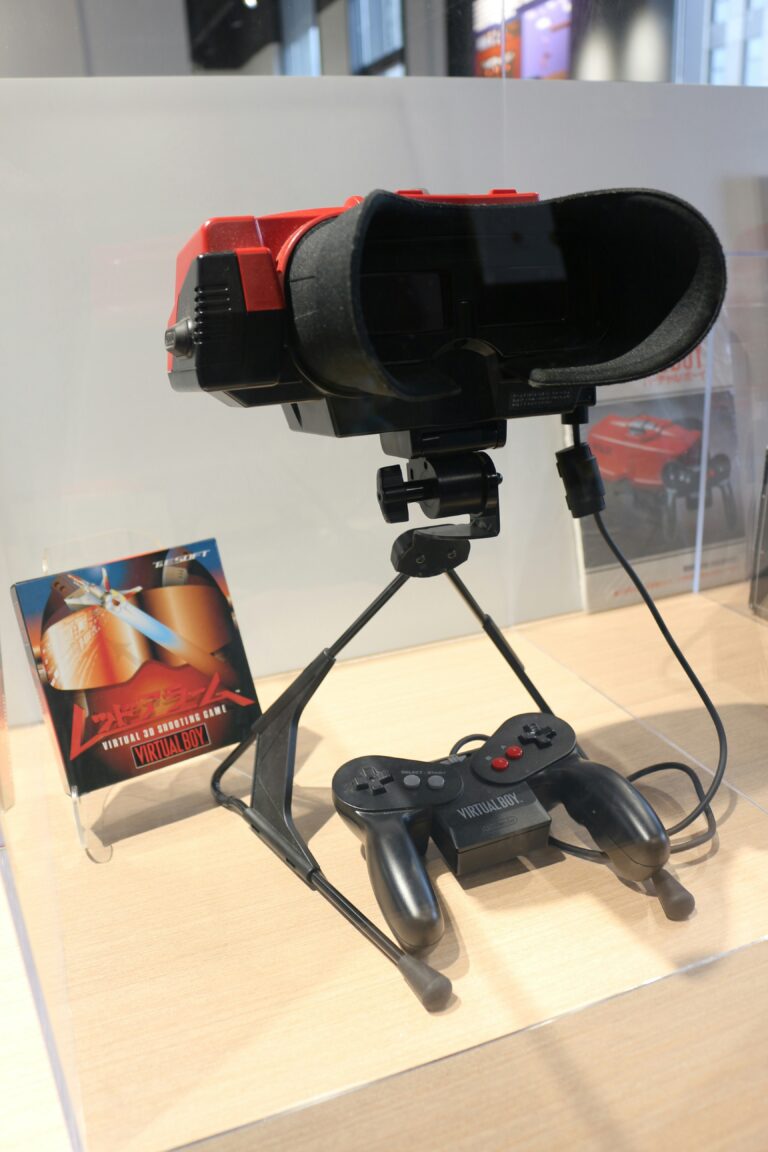In an industry rife with innovation and evolving technology, some creations shine brighter, setting the bar high for others to follow. One such masterpiece, shrouded in the timeless veil of the past, yet gleaming with enduring brilliance, is the Co-op RPG game – Secret of Mana. This game, a hidden gem in the world of gaming, was ahead of its time in many respects and continues to influence RPG design to this day. The immersive, pixelated world of Secret of Mana comes alive through its innovative features, captivating storyline, and the perfect blend of solitary and multiplayer gameplay.
Our journey through the verdant landscapes and intricate labyrinths of Secret of Mana is not merely a nostalgic trip down memory lane. It is an exploration of an inventive game design that transcends the bounds of its era. This blog post aims to delve deeper into the enchanting realm of Secret of Mana, exposing the techniques and elements that make it stand apart in the gaming landscape.
We begin our exploration with a look at the origins of Secret of Mana, uncovering the genius behind its creation and understanding the context of its release. This sets the stage for us to explore the game’s groundbreaking features, such as its unique co-op gameplay, intricate world design, and intuitive combat system. We delve into how these elements combine to create a gaming experience that remains unmatched, and how they continue to inspire contemporary RPGs.
So, prepare to embark on an enchanting journey through the magical world of Secret of Mana, full of mystical creatures, heroic battles, and legendary quests. A game that was, undoubtedly, ahead of its time. This classic RPG still holds the power to captivate, challenging us to unravel its secret and appreciate the magic it continues to weave in the realm of gaming. The adventure beckons, are you ready to answer its call?
The Genesis of Secret of Mana
Before diving into the fascinating world of Secret of Mana, let’s take a look at its origin. The game was developed and published by Square (now Square Enix), a Japanese video game company renowned for creating classic role-playing games (RPGs) like the Final Fantasy series. Secret of Mana, originally released as Seiken Densetsu 2 in Japan, is the second installment in the Mana series. It was introduced to the world in 1993 and soon captured the hearts of gamers with its distinctive gameplay and revolutionary features.
Secret of Mana is set in a high fantasy universe, a world teeming with magic and inhabited by a diverse array of creatures. The storyline is centered around a hero, accompanied by a girl and a sprite, who wields a legendary sword to vanquish an empire seeking to harness the destructive power of an ancient fortress.
What sets Secret of Mana apart from other RPGs of the time is its unique real-time battle system and the innovative co-op gameplay, which allowed up to three players to embark on the adventure simultaneously. This groundbreaking feature was indeed ahead of its time, considering the limitations of the Super Nintendo Entertainment System (SNES) platform on which the game was released.
Co-op Gameplay: A Revolutionary Feature
Most RPGs of the early ’90s relied on a turn-based combat system, where players and enemies took turns to execute their actions. Secret of Mana, however, broke this mold by adopting a real-time combat system. This system offers a more dynamic, engaging experience as players must quickly react to enemy movements and attacks.
On top of this, the co-op gameplay feature offered a whole new dimension to RPGs. With a Multitap accessory for the SNES, up to three players could join in and control the game’s three main characters. This cooperative mode brought a social aspect to the RPG genre, which was generally a solitary experience. It encouraged teamwork and strategy, making the game even more enjoyable and memorable.
Let’s delve deeper into the mechanics of this cooperative gameplay. In the “Secret of Mana – Co-op Gameplay Explained” video by the YouTube channel ‘Gaming History Source’, you can see this feature in action and understand how it significantly improved the overall gaming experience.
Graphic and Sound Design: A Timeless Masterpiece
Beyond its innovative gameplay features, Secret of Mana is also lauded for its aesthetic and sound design. The game’s world is depicted in colorful, detailed 16-bit graphics that create a vibrant and immersive environment. The lush landscapes, the intricate design of towns and dungeons, and the varied character designs all contribute to the rich visual experience of the game.
The soundtrack of Secret of Mana, composed by Hiroki Kikuta, is another gem in its own right. The music masterfully blends traditional instrumentation with synthesizer sounds, creating a unique, enchanting soundscape that perfectly complements the game’s fantasy setting. Tracks like “Fear of the Heavens” and “The Oracle” are unforgettable pieces that encapsulate the game’s grandeur and adventure.
For a more in-depth analysis of the game’s visual and sound design, watch the video “Secret of Mana – A Look at Graphics & Sound Design” by the YouTube channel ‘Game Analysis Central’.
Legacy and Impact: How Secret of Mana Influenced Future RPGs
The influence of Secret of Mana on future RPGs is evident in several ways. Its real-time combat system, for instance, paved the way for more action-oriented RPGs. It showed developers and players alike that RPGs could be more than just turn-based strategic games, but can also offer fast-paced, action-filled experiences.
Furthermore, the game’s cooperative gameplay feature marked a significant shift in the RPG genre. It demonstrated that RPGs could be a shared experience, sparking a trend of multiplayer RPGs that continues to this day. Games like Baldur’s Gate: Dark Alliance and Champions of Norrath owe a lot to the trail blazed by Secret of Mana.
Even after almost three decades since its release, Secret of Mana still holds a special place in the hearts of gamers. Its innovative gameplay, captivating story, and remarkable aesthetics make it a timeless classic in the RPG genre. As we continue to see advancements in gaming technology and design, it’s worth remembering and celebrating the groundbreaking games like Secret of Mana that have paved the way for these developments.

Conclusion
In conclusion, Secret of Mana remains a monumental milestone in the history of role-playing games. Its innovative mechanics, captivating narrative, and meticulous aesthetic design have set it apart from other RPGs of its time and have continued to influence future game developments. This article has delved into the genesis of Secret of Mana, examining its revolutionary features such as its unique real-time battle system and co-op gameplay, as well as the captivating high-fantasy universe that served as its setting.
The game’s divergence from the traditional turn-based combat system prevalent in the early ’90s, to a more dynamic, real-time approach, introduced a refreshing twist to the RPG genre. This adjustment demanded swift reaction times from players, creating a more engaging gaming experience. Additionally, the game’s co-op feature, which allowed up to three players to join the adventure simultaneously, marked a significant shift in the RPG landscape. This feature added a social dimension to the generally solitary RPG experience, fostering teamwork and strategy, thereby enhancing the enjoyment derived from the game.
Moreover, the aesthetic brilliance of Secret of Mana, manifested through its vibrant 16-bit graphics and masterful soundtracks composed by Hiroki Kikuta, contributed to the rich, immersive gaming experience it offered. The detailed landscapes, intricate design of towns and dungeons, and varied character designs amalgamated to form a vivid and enchanting game world. Equally, the game’s soundtrack, which expertly fused traditional instrumentation with synthesized sounds, formed a unique, magical soundscape that perfectly captured the essence of the game’s high-fantasy setting.
Reflecting on its legacy, it is clear that Secret of Mana has left an indelible mark on the RPG genre. By introducing action-oriented gameplay and shared gaming experiences into the RPG domain, it has paved the way for many subsequent RPGs. Its influence is evident in games like Baldur’s Gate: Dark Alliance and Champions of Norrath, showcasing its far-reaching impact.
Nearly three decades post its release, Secret of Mana continues to hold a special place in the hearts of gamers worldwide. Its timeless appeal is a testament to its well-crafted gameplay, gripping narrative, and stunning aesthetics. As we witness the rapid progression of gaming technology and design, it’s crucial to remember and celebrate pioneering games like Secret of Mana that have laid the groundwork for these advancements.
In revisiting the game through this article, hopefully, it has sparked your interest or rekindled your fond memories of this RPG classic. Your comments, shares, or application of the insights gained from this article are highly encouraged. It’s through such engagements that we can keep the spirit of games like Secret of Mana alive and continue to appreciate the groundbreaking efforts of their creators. Be sure to check out the link to the “Secret of Mana – Co-op Gameplay Explained” video and the link to the “Secret of Mana – A Look at Graphics & Sound Design” video for more insights into this iconic game. Let’s continue to delve deeper into the fascinating world of RPGs and explore the rich history of game development that has shaped our current gaming landscape.



